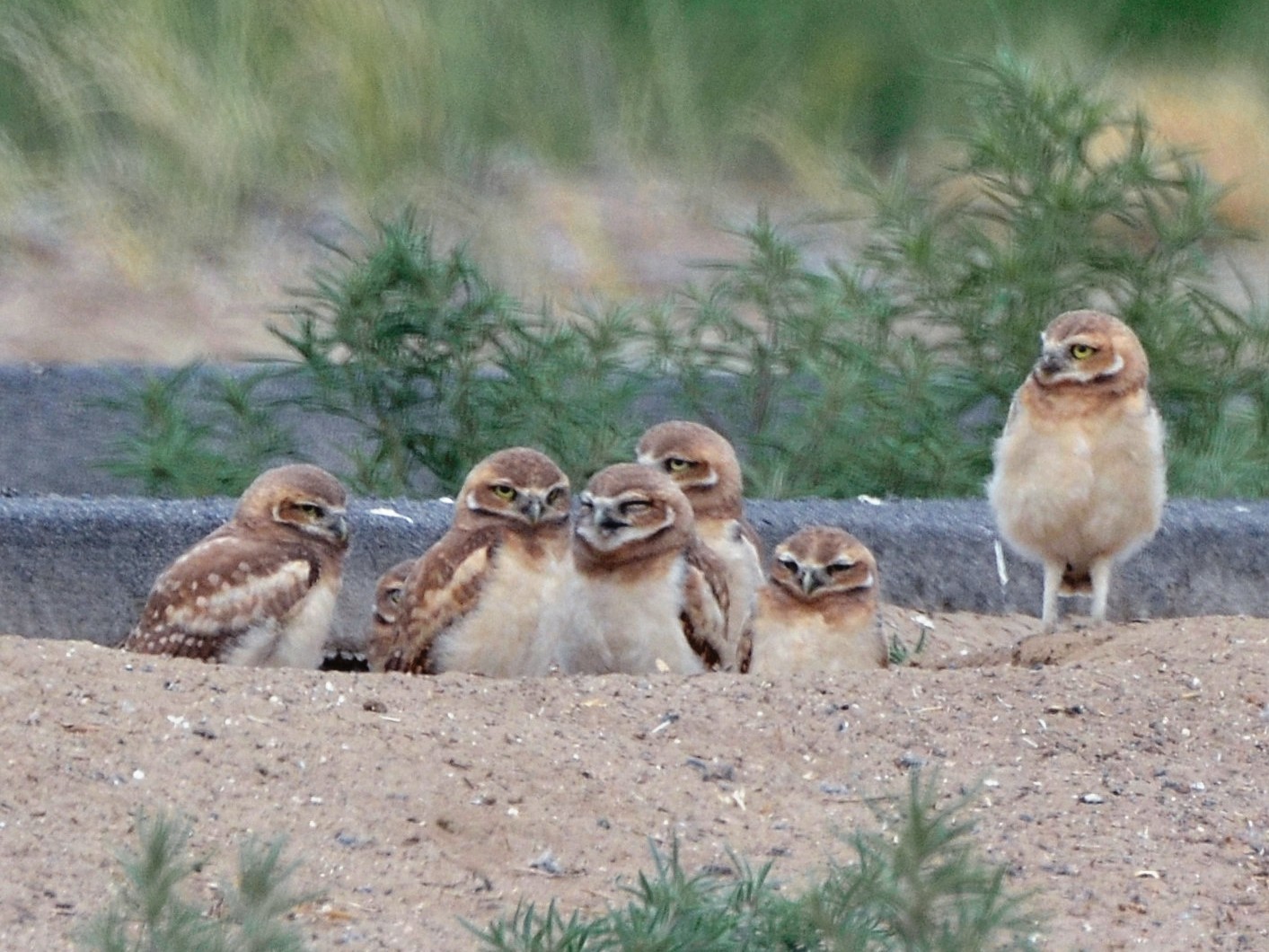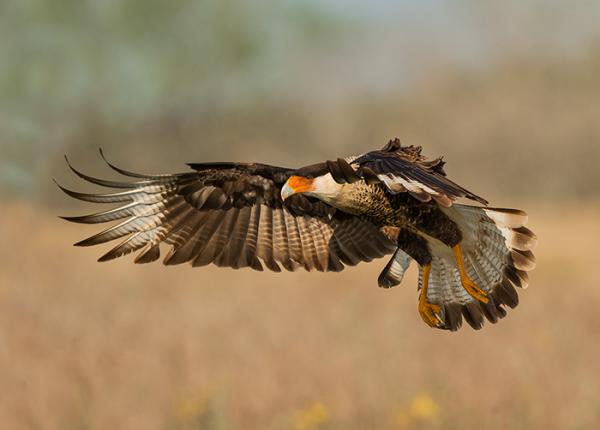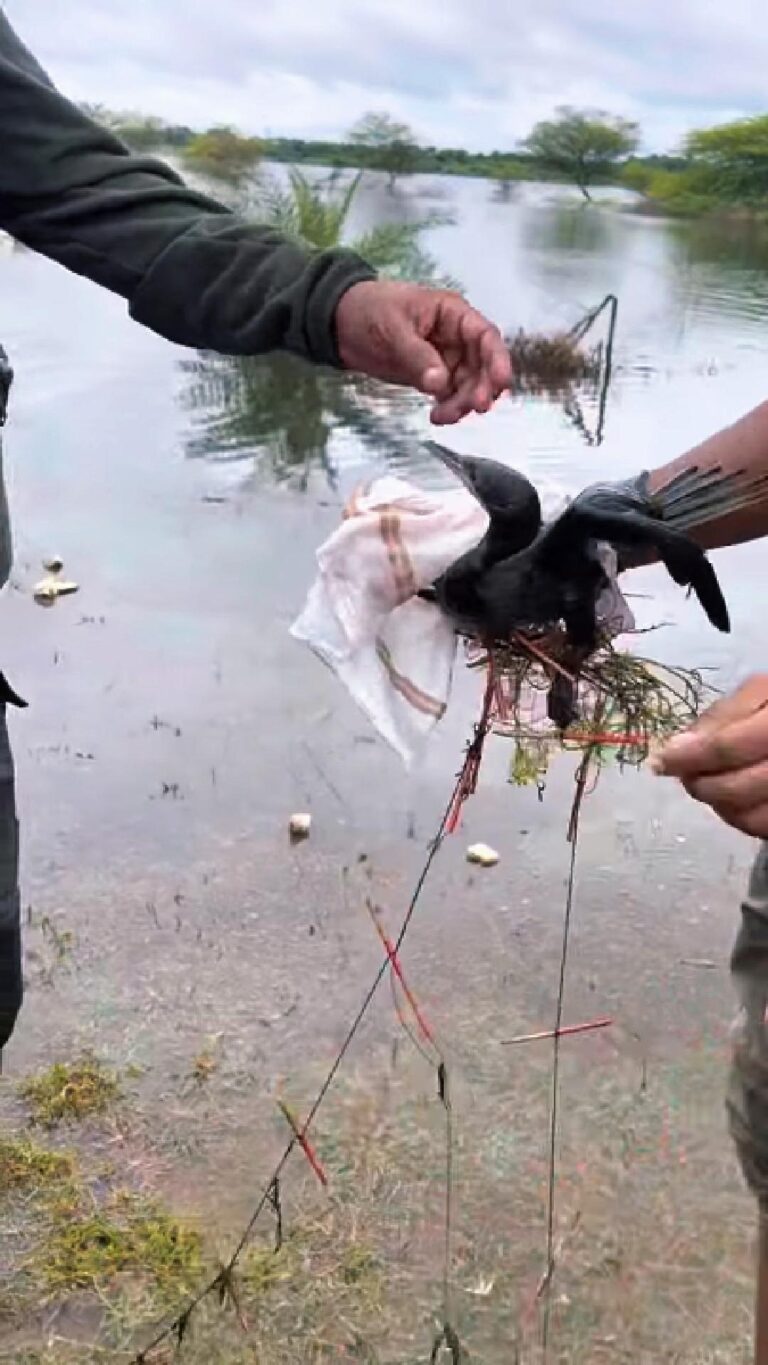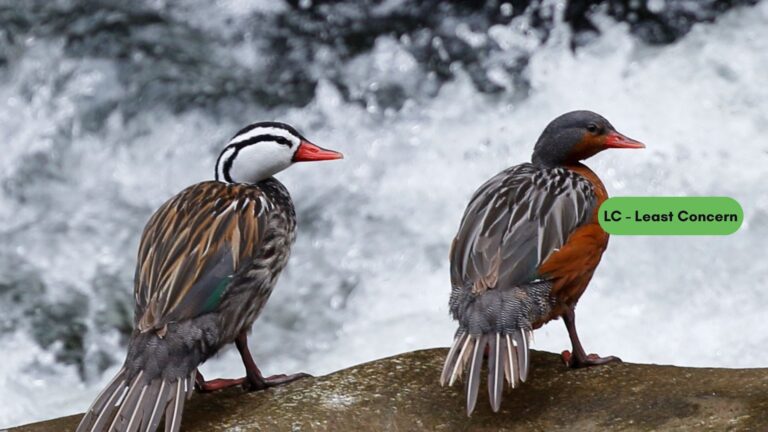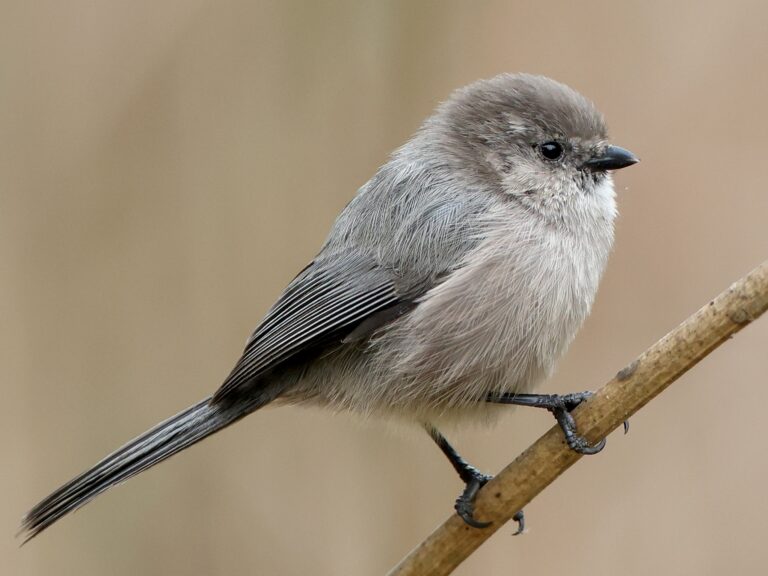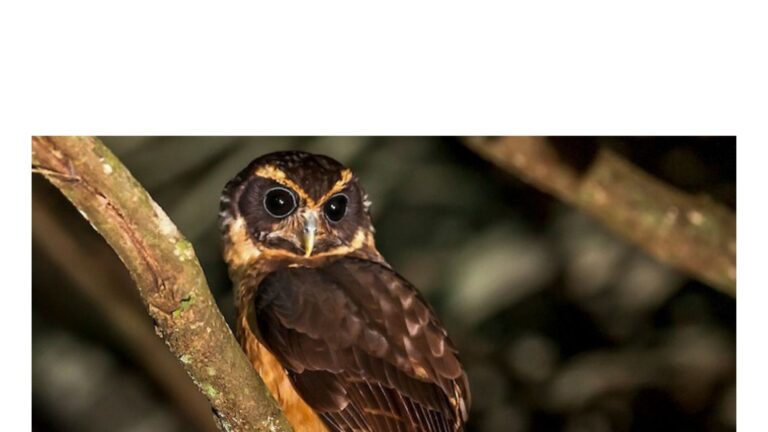Burrowing Owls: Unique Ground-Dwelling Raptors of North America
Burrowing owls are unique members of the owl family with fascinating habits that set them apart from their tree-dwelling relatives.
Unlike most owls, Burrowing Owls live underground in burrows they either dig themselves or take over from prairie dogs, ground squirrels, or other burrowing animals.
These small, long-legged owls have adapted remarkably well to ground dwelling, developing behaviors that help them survive in open landscapes from western North America to South America.
The charm of these birds comes from their distinctive appearance and behavior.
Standing about 9 inches tall with bright yellow eyes, they bob their heads when alarmed and make a chattering or chuckling call.
Burrowing Owls can often be seen during daylight hours, unlike many nocturnal owl species, making them a delight for birdwatchers. They’re known to collect various items like bottle caps, tin foil, and other shiny objects to decorate their burrow entrances.
Despite their adaptability, these remarkable birds face significant challenges.
Human development has reduced their natural habitat, and many of the burrowing mammals they depend on for ready-made homes have declined.
Conservation efforts are crucial for ensuring the continued presence of these charismatic birds in our grasslands and deserts.
Key Takeaways
- Burrowing owls are ground-dwelling birds that nest in underground burrows and can be active during daylight hours.
- They have a varied diet consisting primarily of insects and small mammals, with distinctive hunting techniques adapted to open habitats.
- These owls face habitat loss challenges across North America, leading to their designation as a species of conservation concern in many regions.
Taxonomy and Description
Burrowing owls belong to the taxonomic family Strigidae and are scientifically classified as Athene cunicularia. They possess distinct physical features that help them thrive in their unique underground habitats.
Physical Characteristics
The burrowing owl is a small owl species with a round head and lacks the ear tufts common in many other owl species. These owls typically weigh between 5-8.5 ounces (140-240 grams).
Their appearance is marked by brown coloration with white spotting on the upper parts and barred brown and white on the chest and belly. One of their most distinctive features is their bright yellow eyes.
Unlike most owls, burrowing owls have notably long legs that help them run across the ground and stand tall to spot predators.
Their height ranges from 7.5-10 inches (19-25 cm) with a wingspan of 20-24 inches (50-61 cm). These owls belong to the order Strigiformes, which includes all owl species. Their ground-dwelling lifestyle makes them unique among the owl family.
Subspecies Variation
Researchers recognize up to 18 subspecies of burrowing owls across their range, with variations in size and coloration.
The Western Burrowing Owl (A. cunicularia hypugaea) is found throughout western North America and displays slightly paler plumage than other subspecies.
The Florida Burrowing Owl (A. cunicularia floridana) is notable for being the only subspecies that digs its own burrows rather than depending on other animals’ abandoned holes.
South American subspecies tend to be smaller with subtle variations in facial markings and feather patterns.
These variations reflect adaptations to different habitats across the Americas, from grasslands to coastal areas.
Recent taxonomic studies continue to refine our understanding of burrowing owl subspecies classification and relationships.
Habitat and Distribution
Burrowing owls occupy specific landscapes across the Americas, selecting habitats based on availability of burrows and open terrain. These small owls have adapted to various environments from desert regions to grasslands, though their populations face challenges due to habitat loss.
Geographical Range
Burrowing owls have a wide distribution throughout the Americas. They range from western Canada through the western United States and into Mexico.
Their territory extends into Central America, parts of the Caribbean, and across significant portions of South America.
In North America, these owls are found primarily in the Great Plains region and western states.
Their distribution overlaps with prairie dog colonies in many areas. The Florida subspecies represents an important eastern population, inhabiting both natural and man-made habitats within the state.
In South America, burrowing owls occupy countries including Argentina, Brazil, and Peru.
Habitat Preferences
Burrowing owls strongly prefer open landscapes with short vegetation and available burrows. They thrive in:
- Grasslands and prairies with sparse vegetation
- Desert ecosystems with scattered shrubs
- Agricultural fields and pastures
- Airport fields and golf courses
- Urban vacant lots
These owls rely on existing burrows created by other animals.
In North America, they frequently utilize burrows made by prairie dogs, ground squirrels, and badgers.
Studies show negative associations between owl presence and dense shrub coverage in some regions.
Habitat destruction and alteration represent primary threats to burrowing owl populations. They require open ground for hunting and sufficient territory around burrow entrances for nesting success.
Diet and Hunting
Burrowing owls are opportunistic hunters with a diverse diet that changes based on prey availability and habitat. They hunt primarily at dawn and dusk, capturing a wide range of prey to meet their nutritional needs.
Feeding Habits
Burrowing owls consume a remarkably varied diet. Insects make up a significant portion of their food intake, with beetles, grasshoppers, and crickets being common prey items. Many owls also target dragonflies, especially in the evenings when these insects become torpid and perch on low vegetation.
Small mammals form another important part of their diet. Mice, voles, and small rats are frequently hunted, particularly when feeding young owlets who need protein-rich food.
Their diet also includes scorpions, amphibians, small reptiles, and occasionally fish.
The dietary composition varies between natural and modified habitats, showing the burrowing owl’s adaptability.
Urban-dwelling burrowing owls may have different diets compared to their rural counterparts, adapting to whatever prey is available in city environments.
Hunting Techniques
Burrowing owls employ several distinct hunting methods. Their most recognizable technique is hovering – they fly in place about 3-10 meters above the ground before diving onto prey.
Ground hunting is equally common, with owls running or walking to catch insects and other small creatures. These owls have relatively long legs compared to other owl species, making them efficient ground hunters.
Vegetation density influences their hunting behavior. While dense vegetation might contain more prey, burrowing owls often prefer hunting in sparser areas where they can more easily spot and capture food.
Agricultural areas attract these owls because farming activities can expose prey. Freshly plowed fields provide excellent hunting grounds as they reveal previously hidden insects and rodents. During breeding season, male owls do most of the hunting, bringing food to females and chicks at the nest.
Behavior and Lifestyle
Burrowing owls have unique behavioral patterns that distinguish them from other owl species. They exhibit complex social structures and distinct daily routines that help them survive in their grassland habitats.
Social Structure
Burrowing owls typically live in loose colonies, though some may nest as solitary pairs.
These social birds often establish their burrows near each other, creating small communities that provide mutual protection against predators.
Males and females form monogamous pairs during breeding season.
The courtship ritual involves the male bringing food gifts to the female and performing aerial displays to attract a mate. Both parents participate in raising their young.
They share responsibilities for incubating eggs, feeding juveniles, and defending the nest. This cooperative parenting enhances the survival chances of their offspring.
Interestingly, burrowing owls line their burrows with animal dung and other materials.
This behavior serves multiple purposes: attracting insects for food, masking the owls’ scent from predators, and regulating nest temperature.
Daily Activity Patterns
Unlike most owl species, burrowing owls are active during daylight hours, especially at dawn and dusk. This diurnal behavior allows them to hunt when their preferred prey is most active.
They spend significant time perched at their burrow entrance or on nearby low posts, vigilantly scanning their surroundings. This behavior helps them spot both prey and potential threats.
When hunting, burrowing owls typically run along the ground to catch insects or small mammals. They may also hover briefly before diving to capture prey, showing remarkable adaptability in their hunting techniques.
Urban burrowing owls exhibit different behaviors than their rural counterparts.
They often show lower flight initiation distances (FID), meaning they allow humans to approach more closely before fleeing. They’ve adapted to human presence while maintaining their essential survival behaviors.
Reproduction and Development
Burrowing owls have unique reproductive behaviors adapted to their ground-dwelling lifestyle. They typically nest in abandoned burrows and have specific parenting roles that ensure the survival of their young.
Breeding
Burrowing owls breed once yearly, typically beginning in March or April.
The male owl selects and prepares the nest burrow, often decorating the entrance with animal dung. This may help mask the scent from predators and attract insects for food.
After courtship, the female burrowing owl lays a clutch of 6-12 white eggs.
Clutch sizes can vary based on habitat conditions and food availability.
The female incubates the eggs for about 28-30 days while the male provides food.
Reproductive success varies significantly based on environmental factors.
Urban development has shown mixed effects on breeding success, with some studies indicating that owls in developed areas may maintain similar reproductive rates to those in natural habitats.
Growth of Offsprings
When eggs hatch, the young owls are helpless with closed eyes and covered in white down. Both parents participate in caring for the brood, with males continuing to hunt while females primarily stay with the young.
After about two weeks, the owlets develop a second coat of down and begin to explore the burrow entrance. By four weeks of age, they become more visible, appearing as small, long-legged birds with distinctive spotted plumage.
Young owls start flying at approximately six weeks old but remain dependent on their parents for several more weeks.They develop hunting skills by pouncing on insects and small prey items brought by parents.
Estimates of reproductive success show that typically 3-5 young per nest survive to fledging age. Predation, food availability, and habitat quality significantly influence offspring survival rates.
Interactions with Other Species
Burrowing owls engage in complex relationships with various animals in their ecosystem. They face threats from predators while also forming beneficial connections with certain burrowing mammals for shelter.
Predators
Burrowing owls face threats from numerous predators in their habitat.
Larger birds of prey often hunt adult owls, particularly during nesting season.
In the west, badgers, coyotes, and foxes frequently raid nests for eggs and young owls.
Snakes, especially rattlesnakes, pose a significant danger to burrowing owl nests. These reptiles can easily access underground burrows where owls nest.
Burrowing owls have developed defensive behaviors against these threats.
When predators approach their territory, they emit alarm calls and perform distraction displays to protect their young. Some males will actively mob potential threats, diving at predators to drive them away from nesting sites.
Symbiotic Relationships
Burrowing owls form important relationships with burrowing mammals across their range.
Prairie dogs create colonies that provide ready-made homes for the owls, who rarely dig their own burrows.
Research shows these ecosystem engineers are not always interchangeable as facilitators for owl nesting success. In some regions, burrowing owls utilize tortoise burrows or armadillo dens as nesting sites.
The relationship benefits owls with shelter while generally not impacting the original digger. Burrowing owls also help control pest populations, consuming numerous arthropods including:
- Grasshoppers
- Beetles
- Centipedes
- Small lizards
Agricultural areas can create both opportunities and challenges for these relationships, affecting prey availability and habitat quality for burrowing owls.
Conservation Status
Burrowing owls face significant challenges across North America with populations declining in many regions. Current conservation strategies include habitat protection and innovative solutions like artificial burrows to offset the loss of natural nesting sites.
Population Decline
The western burrowing owl has experienced substantial population declines across much of its historical range.
This decline is particularly evident in grassland and prairie ecosystems, where habitat loss continues at an alarming rate. Burrowing owls typically live six to eight years in the wild, but their populations have decreased by more than 50% in some areas.
In Oklahoma, experts estimate only 800-1000 burrowing owls remain, occupying just a fraction of their historical territory. The species is currently listed as “endangered,” “threatened,” or a “species of concern” in multiple states.
This status varies by region and subspecies, with the Florida burrowing owl facing different challenges than its western counterparts.
Conservation Efforts
Effective conservation of burrowing owls requires a comprehensive approach addressing habitat protection, public education, and colony management. Scientists have developed five major action components focusing on population monitoring and habitat preservation.
The relationship between burrowing owls and prairie dogs is crucial for conservation efforts.
Prairie dogs create the burrows that owls depend on for nesting and shelter. Protection of black-tailed prairie dogs and American badgers has become essential for owl conservation.
Conservation strategies include:
- Installing artificial burrows in suitable habitats
- Protecting existing prairie dog colonies
- Restoring grassland ecosystems
- Implementing stricter land use policies
- Educating landowners about the importance of these birds
Frequently Asked Questions
Burrowing owls are fascinating birds with unique habits and characteristics that set them apart from other owl species. They face various challenges in their natural habitats and have developed interesting adaptations to survive.
What is the typical habitat for a Burrowing Owl?
Burrowing owls primarily inhabit open landscapes with low vegetation such as grasslands, deserts, and agricultural areas. They require loose soil for burrowing or access to abandoned burrows created by other animals.
These owls often establish themselves in active colonies created by burrowing mammals like prairie dogs, ground squirrels, or vizcachas. They prefer areas with multiple burrow options and good visibility to spot predators.
In some regions, burrowing owls have adapted to human-modified environments like airports and golf courses where short grass provides suitable hunting conditions.
What does a Burrowing Owl’s diet consist of?
The burrowing owl’s diet is diverse and varies seasonally based on prey availability.
They primarily consume small mammals including deer mice and meadow voles, which can make up a significant portion of their diet.
Insects form another important component, particularly during summer months when beetles, grasshoppers, and crickets are abundant. These owls also hunt small birds, reptiles, and amphibians when opportunity arises.
How does the size of a Burrowing Owl compare to other owls?
Burrowing owls are among the smallest owl species in North America, standing approximately 7-10 inches (18-25 cm) tall.
They typically weigh between 4.5-9 ounces (130-260 grams), making them about the size of a robin. Their small stature contrasts dramatically with larger species like the Great Horned Owl, which can be up to four times larger.
This compact size enables them to utilize underground burrows effectively.
Despite their small size, burrowing owls have relatively long legs compared to other owl species, an adaptation that helps them run and catch prey on the ground.
Can you describe the typical behaviors of a Burrowing Owl?
Unlike most owls, burrowing owls are often active during daylight hours, especially around dawn and dusk.
They have distinctive behaviors such as retreating to their burrows during bad weather or when threatened. These owls frequently bob their heads when alert or curious, a behavior that likely helps with depth perception.
They also have the unique habit of collecting mammal dung to line their burrow entrances, possibly to attract insects or mask their scent from predators.
During breeding season, male burrowing owls perform elaborate flight displays to attract mates and defend territories.
They’re also highly vocal, making a variety of calls including a chattering alarm call and a two-note hoot used for mating.
What are the main predators of the Burrowing Owl?
Burrowing owls face threats from numerous predators across their range.
Larger birds of prey such as hawks, falcons, and larger owls frequently target both adult birds and nestlings.
Ground predators pose a significant danger, including coyotes, foxes, badgers, and domestic cats and dogs. These predators can dig out burrows, making the predation of nest burrows a serious threat to owl populations.
Snakes also present a danger, particularly to eggs and young owls unable to defend themselves. This diverse range of predators is one reason burrowing owls have evolved to be vigilant and to select burrows with multiple escape routes.
How do Burrowing Owls adapt to their environments?
Burrowing owls have developed remarkable adaptations for their underground and ground-dwelling lifestyle.
Their ability to use existing burrows or dig their own allows them to create safe nesting sites in open habitats with few trees. Their mottled brown plumage provides excellent camouflage against soil and dry vegetation.
When threatened, they can compress their bodies to appear smaller or stretch tall and thin to observe potential danger from a distance. In agricultural areas, burrowing owls have shown flexibility by associating with agricultural landscapes, though this relationship brings both benefits and challenges.
Conservation efforts focus on preserving these unique birds that face numerous issues and challenges in their changing habitats.
